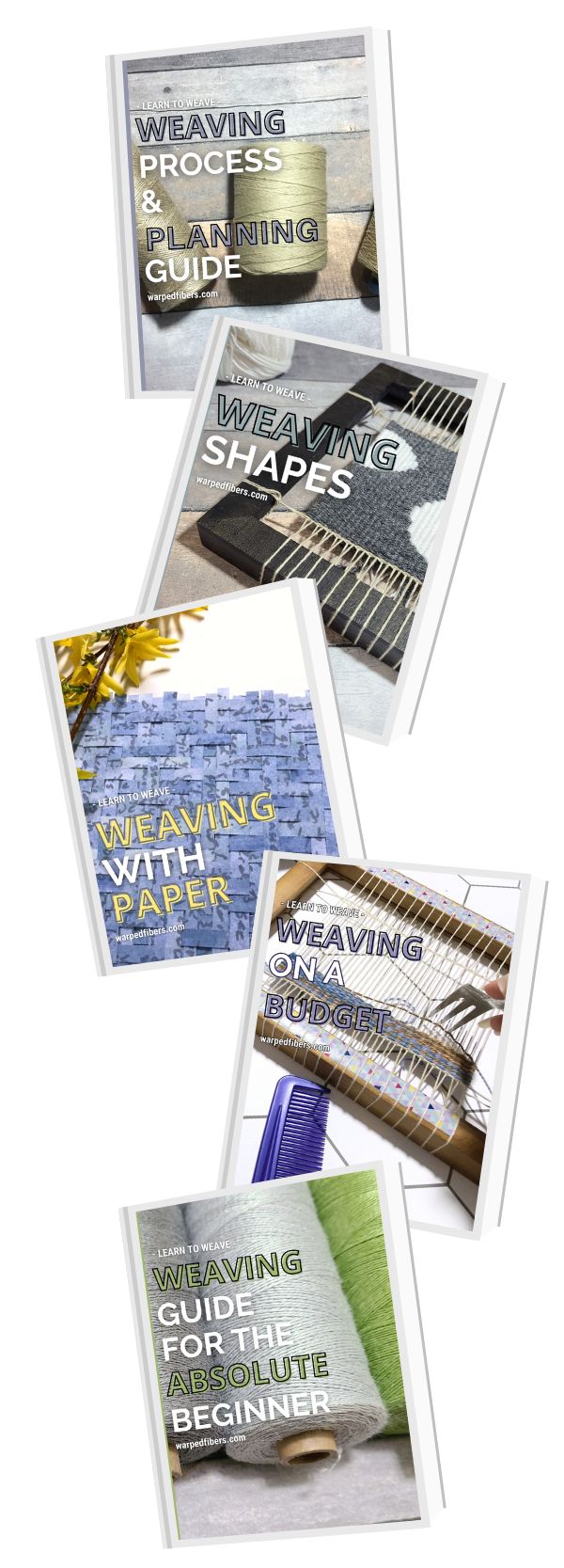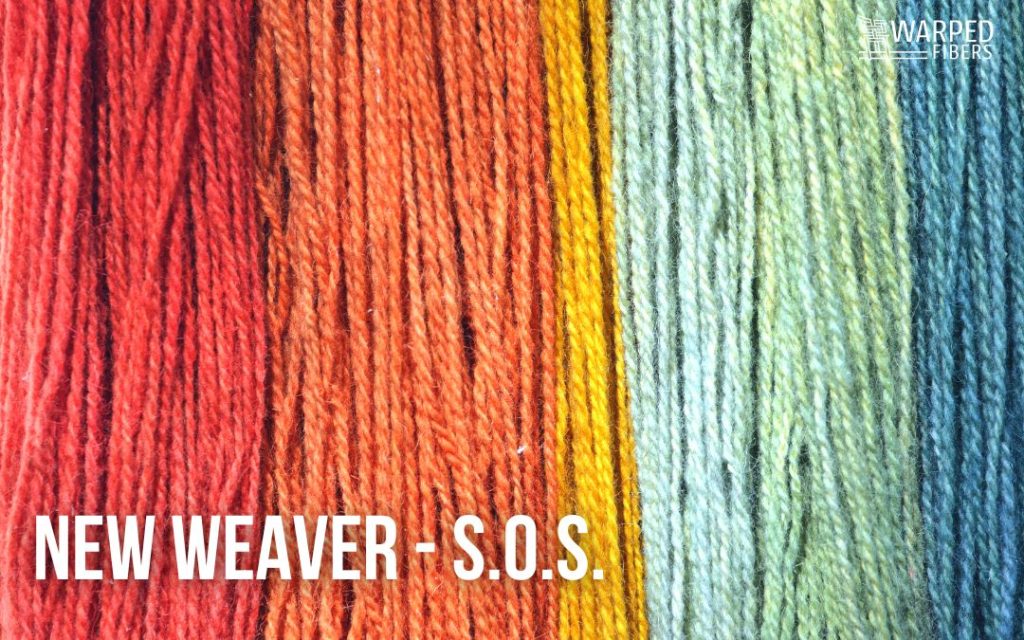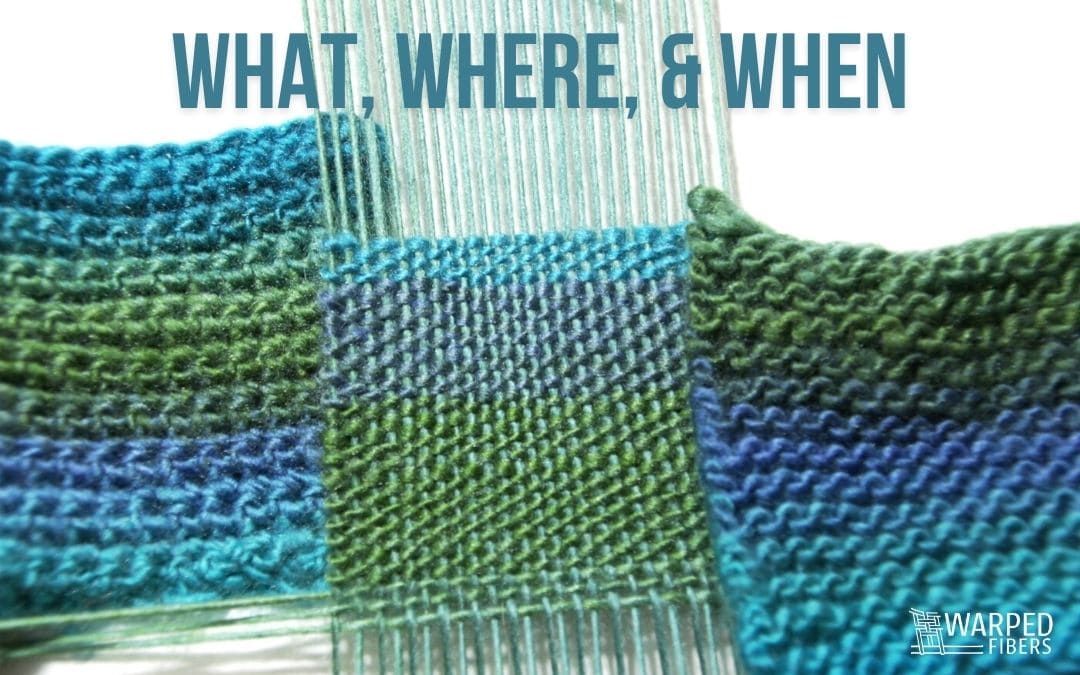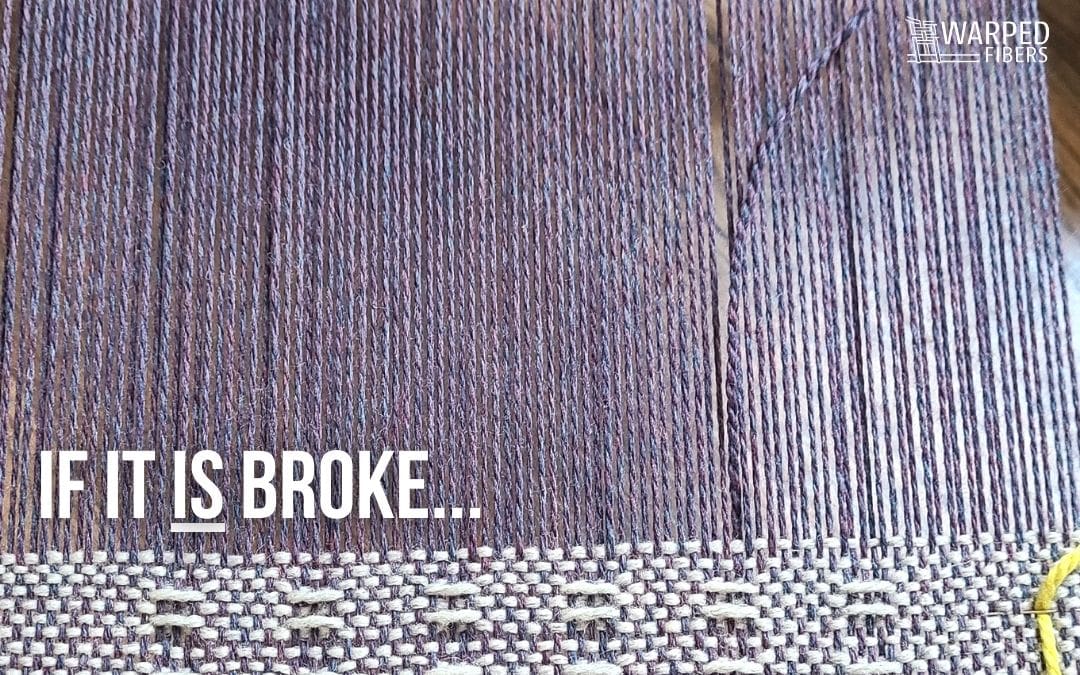Buying yarn can be a little overwhelming at times, especially if you are buying online. It helps to know about some of the different treatments and types of yarn that you might come across. Some of these are superficial, but most have real benefits that you might want to consider for your next weaving project!
Mercerization
Superwash
Wetspun
Bouclé
Slub
Chenille
Noil
Roving
Treatments
Mercerized Yarn
When you are purchasing cotton yarn, you may come across cones that are labeled as “mercerized”, “pearl”, or “perle”.
While pearl and perle are just different names for the same type of yarn, they both refer to the mercerization process that the cotton yarn goes through. They are descriptive names, because you can tell them a part from other cotton yarns by the shine that they have.
It’s not all superficial though.
Mercerization is a process that was first discovered in the 1800s and is achieved through submerging the fibers in sodium hydroxide for a few minutes at a time. They are then rinsed to neutralize the acid.
This treatment does a few things to change the fibers. Most notably it helps the yarn take in dye better. This means you can use less dye than if it wasn’t mercerized. The fiber also becomes stronger after treatment.
One possible con of this technique is that it makes the yarn a little stiffer than it’s matte counterparts so it won’t drape quite as well – in case that’s what you are looking for. That doesn’t mean you can’t use it for scarves, but don’t expect it to hang like linen.
Superwash Yarn
This treatment relates to wool and most often – knitting wool yarns.
Wool is a protein fiber much like human hair. This means that at a microscopic level it has scales that can latch onto each other during the felting process.
Simply, felting occurs when heat and agitation are applied to wool. The heat opens up the scales and the agitation makes them stick together. Felting can also occur with a special barbed needle that manually attaches the fibers together.
Superwash yarn goes through a process to “descale” the yarn which allows the yarn to be washed without felting. If the fiber is smooth then the attachment cannot occur.
This washable attribute is achieved through either an acid wash (similar to mercerized cotton) or by applying a protective coating to the yarn.
It also allows for higher absorption of dye and makes it an overall smoother – albeit stretchier – yarn to work with.
The biggest benefit of this yarn treatment is seen if it used for functional work that is meant to be washed. Scarves, sweaters, and blankets could all benefit from superwash yarn.
Wetspun
Wetspun yarn is attributed to linen and the way that is is turned into yarn.
First, it’s important to understand what linen actually is. Linen comes from the flax plant and goes through a long rigorous process to become a strong and absorbent fiber that has incredible longevity.
During processing the flax fibers are separated into “tow” and “line” . The tow fibers are the short fibers of the flax plant that are used to make rough linen yarns and rope. The line fibers are longer and finer. They are used to make higher quality threads, yarns, and fabrics.
The line fibers are spun wet to further their smooth characteristics. Not only is wetspun linen smoother – but it’s also stronger. This makes it an ideal yarn to use for your warp.
Types
Bouclé Yarn
This yarn is characterized by the small loops or curls that create a textured surface. They are created by spinning with different tensions on the different plies of yarn. When plying yarn, 2 or more “singles” or non-plied yarns are twisted together to create a stronger yarn.
Bouclé texture comes about when 1 single with less tension curls up around the tighter single.
The word bouclé can refer to both the yarn and the fabric made from it.
This type of yarn would be best used as weft as it probably won’t be strong enough for warp. You can always try it out though, if you really want to use it as the foundation for your weaving.
Slub Yarn
These yarns have intentional areas that are thicker than the rest of the yarn. This creates an interesting texture throughout the weaving. Previously, these larger areas were seen as imperfections, but now they are created on purpose for their texture.
Slub yarns also tend to be soft and absorbent so they work well when included in towels and blankets. The thinner areas of this yarn make it not as strong as evenly spun yarn. Therefore, it is not recommended to use slub yarn as warp.
Chenille Yarn
The name chenille comes from the french word for caterpillar – which is a great way to describe this yarn.
Chenille was first manufactured in the 70’s and is notable for it’s soft fuzzy texture. This type of yarn can be made from all different types of fibers – cotton, acrylic, and more. The yarn is made from a pile yarn and a core yarn that are twisted together. It can be either flat or tubular.
Noil
Unlike the silk that you are probably used to that is made with long silk fibers, silk noil is made from the shorter fibers. This creates a textured yarn and fabric that resembles cotton, but with the drape of silk. Due to the shorter fibers used it is not as strong as traditional silk, but it is still durable.
Silk noil is an easy to dye yarn that is less expensive than it’s shinier and smoother counterpart.
Roving
Roving isn’t really so much a type of yarn as it’s actually the precursor to yarn. It is the fluffy un-spun fiber that is eventually turned into the yarn that you know and love. Roving is usually wool, but it can also be other protein fibers or cellulose fibers as well. You can buy almost any fiber as roving to either spin into your own yarn or to incorporate as is into your Fiber Art. It is usually sold in long and narrow bundles in a variety of different colors.
Wool roving is also used when you are felting – both needle and wet felting.
That being said, roving has become very popular to use as a weft “yarn” especially when using techniques like soumak. It creates a soft – cloud like texture that is hard to mistake for anything else.
These are just some of the types of yarn that you might encounter when purchasing yarn!
When in doubt, it’s always a good idea to read the descriptions you can find on the website if you are trying to figure out the yarn’s characteristics.
Are there any other types of yarns or yarn treatments that you are wondering about? Let me know!
References
⇣ Love It? Share It! ⇣
You May Also Like


























Is there anything that can be used to treat a finished product that coats the yarn and seals the fibers to prevent splitting and pilling?
Hmmm, I’m not sure, I haven’t tried any products before for this purpose. If I find anything I’ll update this comment and if you find something, let us know!
Thank you. Someone just gave me 6 skeins of Alpaca yarn from a mill in the UK. It wasn’t soft and fluffy as I expected. I began crocheting test swatches and ended up with a mess of large and loose stitches no matter what size hook I used. The label said “warped and twisted” so I went on line to investigate and it led me to your site. I never knew there was a separate yarn for weaving. This is probably it. Maybe I’ll try mixing it with some merino wool. Any advice will be appreciated.
I wonder what that alpaca yarn would be like after washing? Some yarns will bloom after being washed which makes them softer and fluffier. You could try weaving up a sample with it and washing it to see how it does!
Great to know. I wasn’t aware of the different types of yarn to use ✨🧡
Wow! This is very informative. I learned a lot from reading it